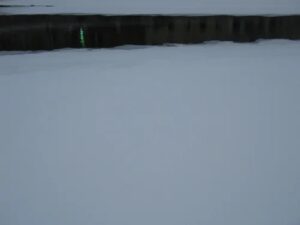
🗓️Friday, December 10, 2010
7:00 -10:00 PM
FRANTS GALLERY SPACE
📍81 Wooster St, 4th fl, New York, NY 10012 USA
RSVP 📞(212) 343- 0104 or
📧rsvp@frantsgallery.com
◆Petr Belyi “A Doomed Forest”◆
Probing the nature of loss is central to many of Peter Belyi’s works. We see before us objects that have been taken out of their natural order with the help of effective manipulation – a cold, artificial light. Time has left its mark upon them, such that their connection to the natural order, to the natural way of things, is evident.T
They seem to bring into focus the confrontation between natural and artificial, and yet it is rather that they construct this difference themselves just as any boundary, through the demarcation of difference, creates confrontation. Thus the object becomes a boundary.
Peter Belyi speaks of Russian 19th-century landscape painting, in which the forest was elevated to the status of a national symbol; he speaks of the material world and of cultural dynamics. His objects present us with the compositional features of landscapes – a dark stripe against a light background, the boundary between land and forest, between forest and sky. A fragment of an old saw creates a tactile, convincing image of a forest. Yet that image is created using the very instrument intended for the destruction of the forest – such inversion is characteristic of Peter Belyi’s poetics.
In his installations, Peter Belyi makes use of very old things. When an object’s practical purpose has evaporated, it starts to accumulate an elusive cultural substance, a substance that is undoubtedly – but not solely – linked to time. Roland Barthes saw time as creating what he called the ‘punctum’ of an image, an idea which seems to be confirmed by old photographs and indeed all old objects.
In this project we see the collection of dents, holes, crevasses and cracks as the work of time and we see the work of time in the departure from an earlier known order. We could be said to be looking at a collection of negative artifacts. Peter thus comments on the rapid circulation or revolution of purpose, on how technological pragmatics displace the pragmatics found on the material’s human element.
The economics of the cultural archive are based on a similar kind of circulation or revolution – on the renewal of the idea of novelty and the inclusion in the cultural archive of objects capable of representing reality, or rather, of representing its frailty. Peter Belyi’s project gives form to the ‘boundary’ as the existential condition not of man, but of objects.
The boundary of interest to the artist is the condition of objects that are doomed and on the verge of extinction – the inevitable and terrible price of reality. The subdued tragedy of his mode of expression points towards the fundamental characteristic of reality, its frailty – and at the same time constructs a paradox. The paradox lies in that this very gesticulation of the frailty which has attracted the artist’s attention, tears the object from the sphere of loss and death and transports it into the sphere of art and thus brings it into the sphere of the eternal.
In this way a project about doomed objects crosses yet another boundary – between the space of art and the cultural archive on the one hand, and the profane space of reality on the other.
Alexander Evangeli